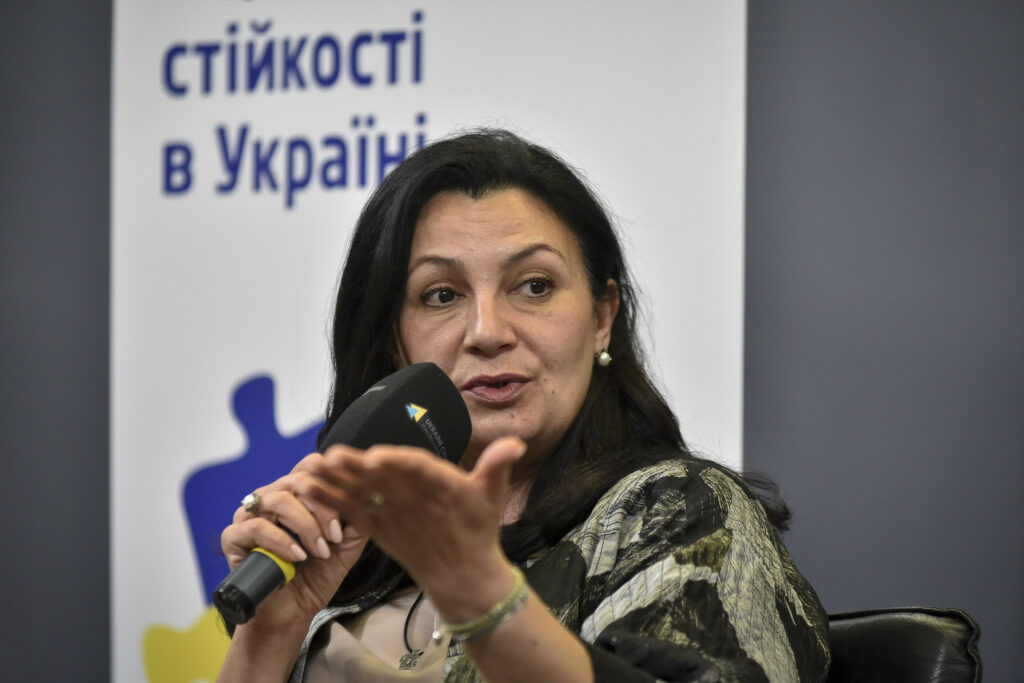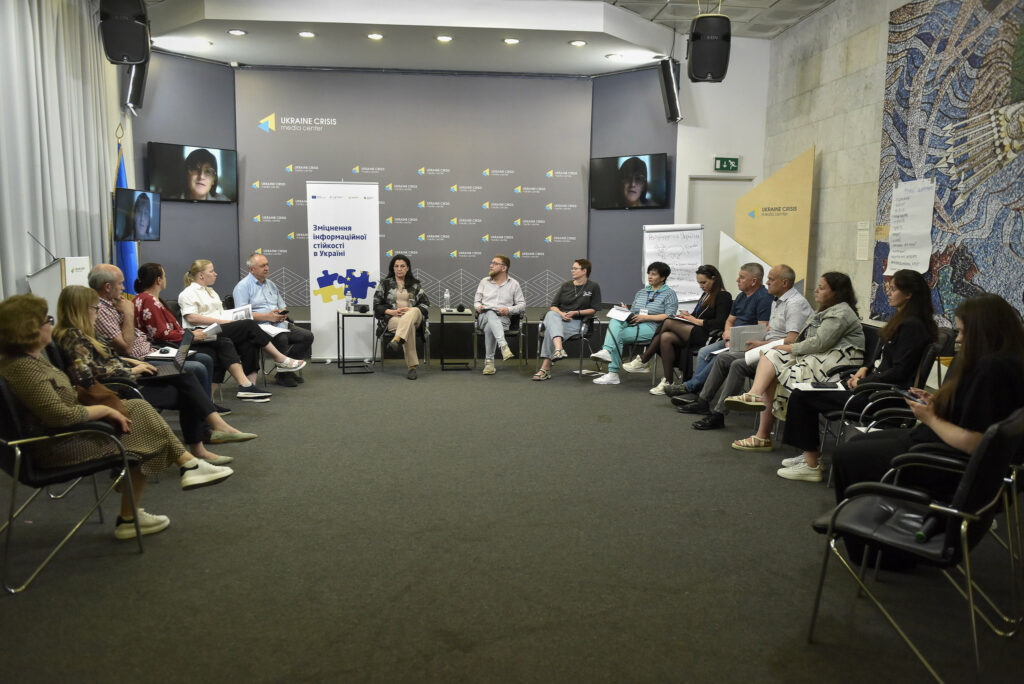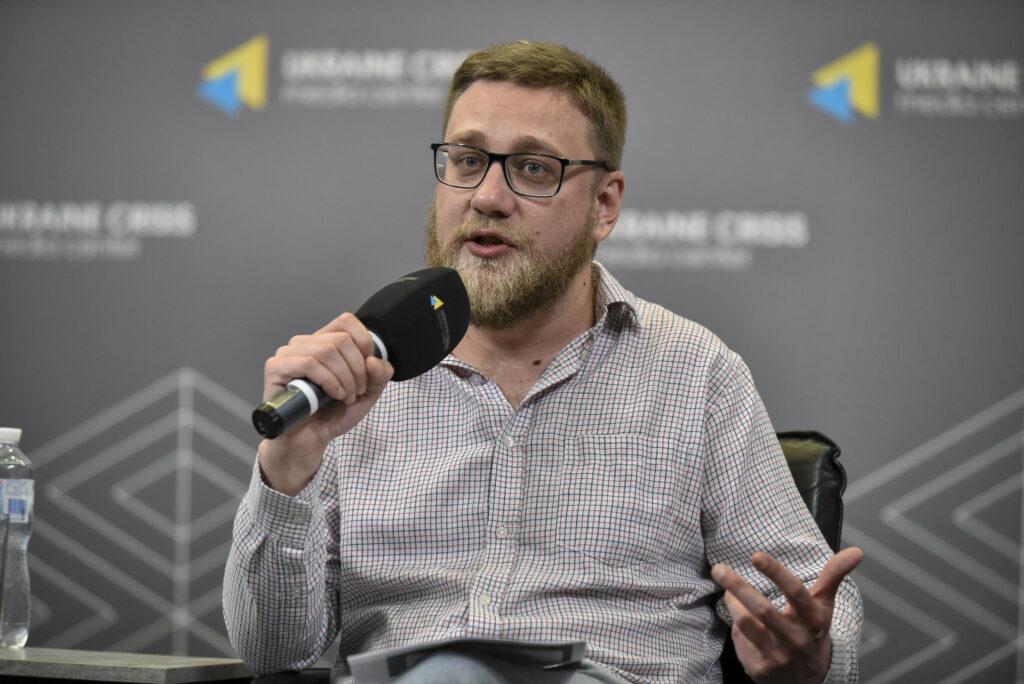As part of the project “Strengthening Information Resilience in Ukraine” in partnership with the International Practitioners’ Partnership Network (Estonia) with the support of the European Union, the Ukraine Crisis Media Center hosted the event “European integration: complex issues explained in simple terms.”
While waiting for the decision on the start of the negotiation process, Ukrainian journalists and communicators want to receive more and more information about where Ukraine is headed and on which section of the road it is. Therefore, the head of the Committee of the Verkhovna Rada on Ukraine’s Integration into the European Union, Ivanna Klympush-Tsintsadze, was invited to the UCMC press center to provide relevant explanations. Here’s what she said.
How the institutions of the European Union work
In European institutions, as in any European state, there is de facto executive, judicial and legislative power, although the legislative function has been modified to some extent. It is divided between three bodies – the European Parliament, the European Commission as an executive body and the European Council as a representation of all member states.
Any document, directive, regulation that we will apply in Ukraine, go this long way of political discussion about how to agree on this position, the so-called trialogue between the European Parliament, the European Commission and the European Council, with participation of all member states.
European Parliament
All those who care about European integration, our future and understanding of how far we can continue to count on the support of the EU are following very carefully how the elections to the European Parliament will be held, because this institution was the most pro-Ukrainian during its last two convocations.
It was the first institution that said that Ukraine should be granted candidate status, and it was the first to call not just for the freezing of Russian assets, but for their seizure and use to help Ukraine. Therefore, it is very important for us what the composition of the next European Parliament will be.
All sociology suggests that the centrist parties will most likely gain the majority that will continue to form the same voice in support of Ukraine. We expect that the approaches of the European Parliament to our country will not change now. But we also understand that the number of radical right-wing, conservative and left-wing forces in the European Parliament will definitely increase.
Depending on what this political body will be, the European Commission will also be formed, because it will be headed by the person who represents the biggest political force.
EU Council
The Council of the European Union can sit at the level of heads of state and government, at the level of ministers of foreign affairs, ministers of defense, ministers of environmental protection – that is, all sectoral defense ministers, and even ambassadors of the EU member states.
We see how often Hungary, unfortunately, takes hostage not only our interests, but also the interests of the European Union itself. To date, the European Peace Facility has suspended funding for purchasing weapons; there is no final decision on the use of at least a percentage of the savings from Russian assets for Ukraine. There are a lot of such things and we must also understand that there are countries in the European Union that are happy to take advantage of the fact that Hungary takes such a tough open position. They gladly hide behind this position and think how good it is that they do not have to play the first roles in this process.
About voting in the EU
Most of the issues related to enlargement, which is what we will be interested in, are unfortunately decided by consensus, that is, unanimity, and this is the biggest challenge for us now. However, in the EU, the discussion about the possibility of transition from consensus decision-making to qualified majority is starting to unfold. At least at the level of security and foreign policy decisions.
What is the Negotiating Framework?
The European Commission, as an executive body in cooperation with the European Parliament, proposed an approach by which negotiations with Ukraine regarding the mechanics of this process could take place. The negotiation approach applied to Ukraine will be based on assessment of Ukraine’s preparedness not by separate chapters, as was the case with the countries of Central and Eastern Europe, but by the so-called clusters. It will be a set of several chapters, united by a specific theme, their effects, etc. For example, conditionally it will be about competition, intellectual property rights, some entrepreneurial things.
In other words, these are general approaches to how negotiations with Ukraine will take place step by step. This is not about details, but about the rules according to which the European Union will conduct Ukraine’s accession negotiations.
How journalists can influence international trade
The participants of the event were introduced to the case of the National Network of Hyperlocal Media Rayon.in.ua, which proves that even local media are able to influence the resolution of issues in the European Union. Natalia Pakhaichuk, the head of innovative projects of the Network, informed the audience about the details.
“Since the border was blocked directly on our territory, it affected the lives of our readers. We have repeatedly found farmers or carriers incurring huge losses for a day of downtime. This topic was not just popular, but also very sensitive for us. And that’s why we decided to cover it a little deeper. We understood that the Polish protests were triggered not so much by a misunderstanding or abuse on the part of Ukraine as by Russia’s influence on a group of people who were blocking our borders. So we went to see what traffic looks like across the Polish-Russian border. We sent our film crew to investigate this issue, prepared, studied the statistics of the goods flow, found out where it was going to. We stopped in a border town where there is a railway checkpoint, and managed to film wagons loaded with liquefied gas, coal – goods that Russia uses to finance the war against Ukraine. But we were not allowed to get further. Our journalists were detained by Polish law enforcement officers, held for a very long time and deported,” Natalia Pakhaichuk said.
The deportation incident caused a great uproar in international media, and the story increased the focus on trade between the European Union and Russia. The issue of the embargo and the raising of quotas for grain, oil and other trade with Russia became more acute. As a result, early in June, it was already reported about the European Commission’s decision on this issue.
In aid of journalists and communicators
UCMC communications expert Andriy Klymchuk presented two projects that can help journalists and communicators of government bodies get acquainted with relevant content related to European integration issues.
“Back when we were working in the government, we were aware of the lack of such communication and information collected in one place. For this reason, the European integration digest was created. We launched it to make life easier for journalists. “
Andriy Klymchuk also informed about the EuroSapiens YouTube channel, which is hosted by Ivanna Klympush-Tsintsadze.
“It was created to explain these complex processes firsthand. With the support of the Renaissance foundation, it began to release video interviews with people who at one time integrated their countries into the European Union.”





